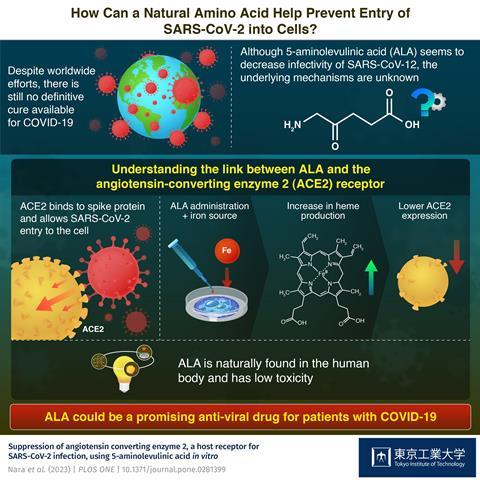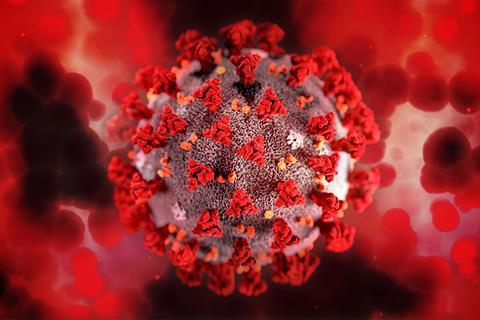A promising treatment strategy that could pave the way for a Covid-19 cure is targeting angiotensin-converting enzyme 2 (ACE2), a receptor found on the cell membrane that allows entry of the virus into the cell due to its high affinity for SARS-CoV-2’s spike protein.

The idea is that reducing the levels of ACE2 on the membrane of cells could be a way to prevent the virus from entering them and replicating, thereby lowering its infectious capabilities.
In a recent study published in PLOS ONE, a team of scientists including Associate Professor Shun-Ichiro Ogura from Tokyo Institute of Technology, Japan, analyzed the potential of a natural amino acid called 5-Aminolevulinic acid (ALA) to reduce the expression of ACE2. This research was performed in collaboration with SBI Pharmaceuticals Co. Ltd.
Underlying mechanisms
As the researchers explain in their paper, ALA had been identified in 2021 as a compound that seemed to reduce the infectivity of SARS-CoV-2. However, the underlying mechanisms that led to this phenomenon remained unknown, until now.
The team hypothesized that the results of the 2021 study could be explained by an effect of ALA on the expression of ACE2. To test their hypothesis, they prepared human cell cultures, administered ACE2 on some of them, and compared the levels of ACE2 in treated cells versus control cells. As expected, the amount of available ACE2 in treated cells was significantly lower than in control cells.

But the story doesn’t end there. Upon uptake, cells transform ALA into a molecule called protoporphyrin IX (PpIX) and subsequently into heme—a precursor of hemoglobin and other useful proteins. This hinted that the expression of ACE2 could be linked to the production of either of these compounds. Thus, the team checked the levels of PpIX and heme in cells treated with ALA.
Significant increases
“We observed significant increases in the concentration of intracellular PpIX, suggesting that ALA was uptaken into the cell and converted into PpIX,” says Ogura. “However, only a slight increase in heme concentration was observed, which might be due to the lack of an iron source to convert PpIX into heme.”
After introducing an iron source in the form of sodium ferrous citrate, the intracellular levels of heme increased significantly and the expression of ACE2 became even lower. These results suggest ACE2 expression is kept in check by heme production, the latter of which can be boosted by the co-administration of ALA and an iron source.
Overall, this study sheds light on how ALA and the heme production pathway could form the basis of a cure for COVID-19.
“We believe ALA could be developed into a potential anti-viral agent for SARS-CoV-2, which may play an important role in the eradication of the disease in a global scale in the near future,” concludes Dr. Ogura.







No comments yet